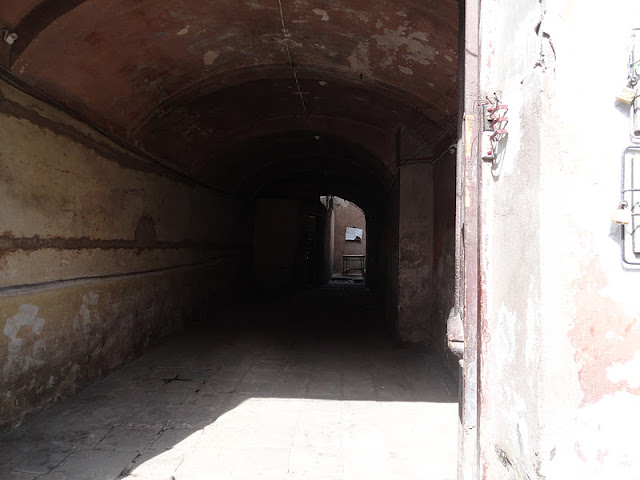We drove four hours into the barren landscape from our last stop, Oruro, and arrived in the dusty city of Potosi. Potosi was founded by the Spanish in the 1500's, and has a long and troubling history of mining and exploitation. In it's heyday it was larger than Paris or London, and the silver mined from the Cerro Rico (literally "rich hill") pictured above fueled the ambitions of the Spanish empire for three hundred years.
The Spanish scraped and blasted every shred of silver from the mountain, and every shred of life out of the millions of people they bought or kidnapped and then worked to death. However, local miners are still working some of the thousands of veins of less-precious metals in Cerro Rico. They use the same techniques, and even contemporary miners have a life expectancy of ten years after they start work. Tours of the working mines are available to the brave, but we decided that this was one thing we might actually skip. Firstly, because it's horrible for you, secondly, the use of dynamite is totally unregulated so cave-ins still happen, and lastly, it seems a bit patronizing to "tour" someone's place of work to marvel at how bad they have it.
We did go for a tour of the mint, and there we got an image of the life of a surface laborer.
 |
| These massive minting machines, brought from Germany, ran 24 hours a day and were powered by "four donkeys" turning a shaft on the level below. |
 |
| How many people died to make these silly, silly things? |
Once the silver was gone, so were the Spanish, leaving behind opulent mansions and churches for which the dirt-poor population had little use. They pried off everything metal, sold everything beautiful, and lived in what was left. The center of town is one of the longest-occupied on the continent, and is now a mish mash of re-purposed villas.
 |
| Electricity and plumbing have been...retrofitted. |
 |
| Beautiful stonework and seamlessly stuccoed arches in an abandoned building |
Though life certainly goes on, every ornate facade in decay serves as a reminder of the crimes commited against the people there. It will never be a quaint Bolivian village; and there is no escaping Spanish ghosts when you live in their ruins. Potosi feels like a city of hermits whose poverty is mocked by their foreign-built home. Living in the master's quarters does not fit, and his absence is not enough to bring back the spirit of a people driven so low. It seems that the Cerro Rico has cursed everyone who has touched it. Potosi is now the poorest state in the poorest country in South America, despite having the richest silver mine in the history of the world. The silver is gone, Spain's empire is gone, and we all know that the world was, and still is, filled with greed and heretics.





